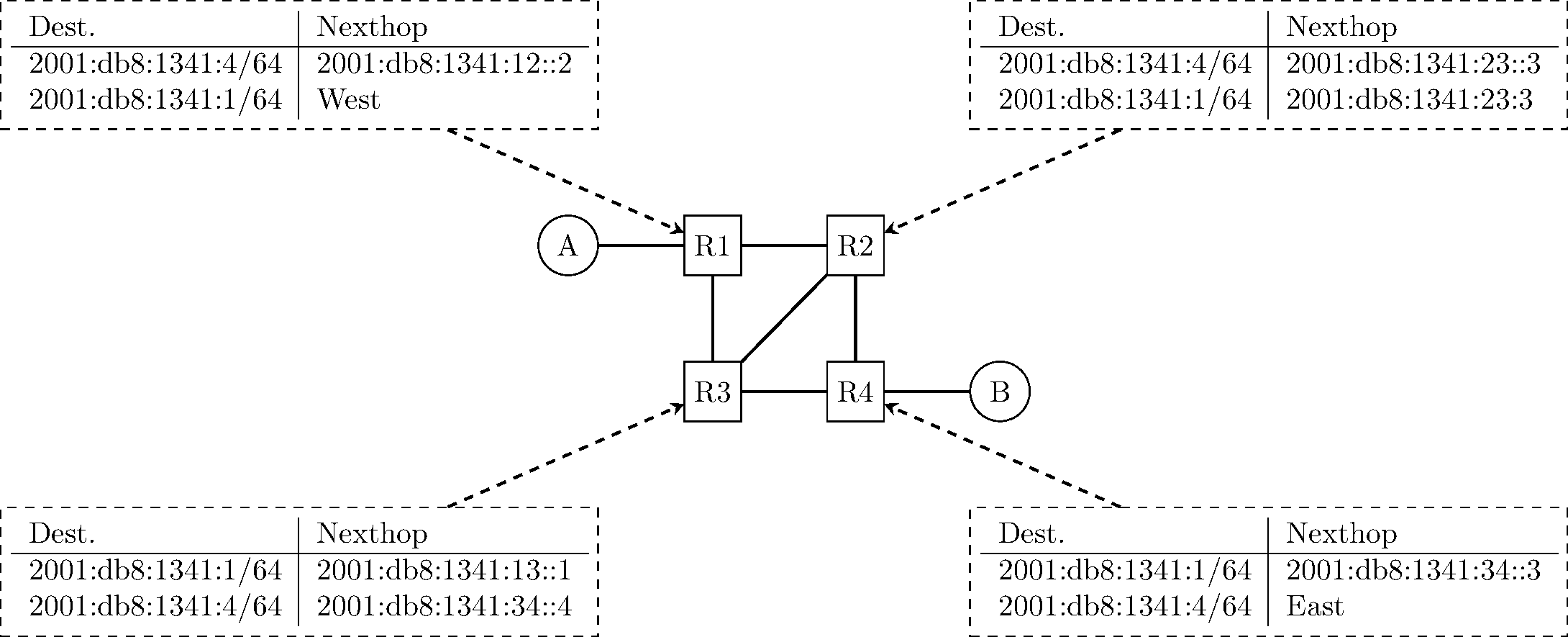Consider the network shown in the figure below. In this network, the following addresses are used.
- host
A:2001:db8:1341:1::Aand its default route points to2001:db8:1341:1::1- host
B:2001:db8:1341:4::Band its default route points to2001:db8:1341:4::4
The routers have one address inside each network :
- router
R1uses address2001:db8:1341:1::1on its West interface, address2001:db8:1341:12::1on its East interface and address2001:db8:1341:13::1on its South interface- router
R2uses address2001:db8:1341:12::2on its West interface, address2001:db8:1341:23::2on its South-West interface and address2001:db8:1341:24::2on its South interface.- router
R3uses address2001:db8:1341:34::3on its East interface, address2001:db8:1341:23::3on its North-East interface and address2001:db8:1341:13::3on its North interface- router
R4uses address2001:db8:1341:34::4on its West interface, address2001:db8:1341:24::4on its North interface and address2001:db8:1341:4::4on its East interface
The forwarding paths used in a network depend on the forwarding tables installed in the network nodes. Sometimes, these forwarding tables must be configured manually.

 INGInious
INGInious